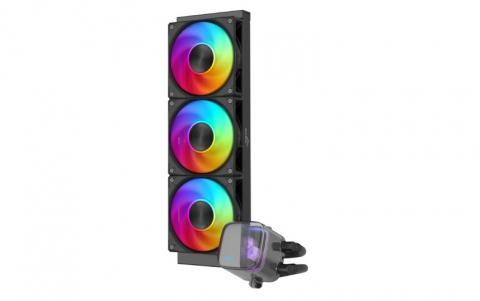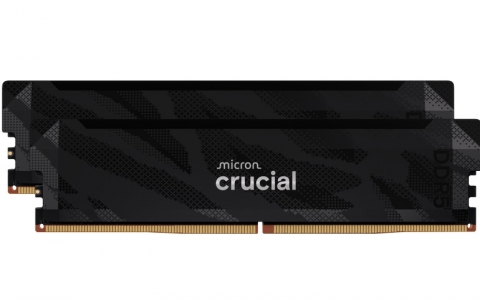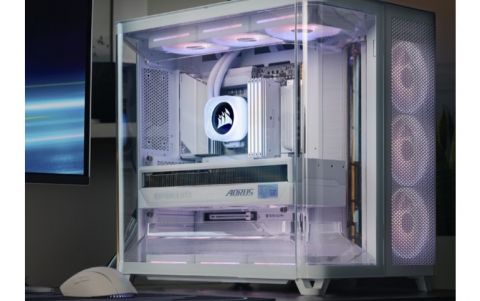
Intel Identifies Sandy Bridge Design Error
Intel has discovered a design flaw in its new recently released support chip, the Intel 6 Series, code-named Cougar Point, and has implemented a silicon fix.
The company said that in some cases, the Serial-ATA (SATA) ports within the chipsets might degrade over time, potentially impacting the performance or functionality of SATA-linked devices such as hard disk drives and DVD-drives. The chipset is utilized in PCs with Intel's latest Second Generation Intel Core processors, code-named Sandy Bridge. Intel claims that it has already stopped shipment of the affected support chip from its factories and that it has corrected the design issue. The company has begun manufacturing a new version of the support chip which will resolve the issue.
The Sandy Bridge microprocessor is unaffected and no other products are affected by this issue, Intel added.
Intel expects to begin delivering the updated version of the chipset to its customers in late February and expects full volume recovery in April. For computer makers and other Intel customers that have bought potentially affected chipsets or systems, Intel will work with its OEM partners to accept the return of the affected chipsets, and plans to support modifications or replacements needed on motherboards or systems.
The systems with the affected support chips have been shipping since January 9th and the company believes that relatively few consumers are impacted by this issue. The only systems sold to any of Intel's an end customers potentially impacted are Second Generation Core i5 and Core i7 quad core based systems. Intel believes that consumers can continue to use their systems with confidence, while working with their computer manufacturer for a permanent solution.
For the first quarter of 2011, Intel expects this issue to reduce revenue by approximately $300 million as the company discontinues production of the current version of the chipset and begins manufacturing the new version. Full-year revenue is not expected to be materially affected by the issue, Intel said. Total cost to repair and replace affected materials and systems in the market is estimated to be $700 million. Since this issue affected some of the chipset units shipped and produced in the fourth quarter of 2010, the company will take a charge against cost of goods sold, which is expected to reduce the fourth quarter gross margin percentage by approximately 4 percentage points from the previously reported 67.5 percent. The company will also take a charge in the first quarter of 2011, which will lower the previously communicated gross margin percentage by 2 percentage points and the full-year gross margin percentage by one percentage point.
Separately, Intel recently announced that it had completed the acquisition of the Infineon Technologies AG Wireless Solutions (WLS) business, which will now operate as the Intel Mobile Communications group.
WLS is a provider of cellular platforms to top-tier global phone makers, and is part of Intel?s strategy to accelerate always-connected computing platforms that span a variety of device and market segments, including laptops, cars, smart phones, tablets and smart TVs.
The new wireless business will now be called Intel Mobile Communications (IMC) and will operate as a standalone business entity within Intel?s Architecture Group to enable continuity of existing customer sales, projects and support, including ARM-based products.
The company also expects to complete the acquisition of McAfee by the end of the first quarter.
The effects of the chipset issue and these transactions are incorporated into the company's revised outlook. The company now expects first-quarter revenue to be $11.7 billion, plus or minus $400 million, compared to the previous expectation of $11.5 billion, plus or minus $400 million.
The full-year revenue growth percentage is now expected to be in the mid-to high teens, compared to the company's prior expectation of approximately 10 percent. Full-year gross margin is now expected to be 63 percent, plus or minus a few percentage points, compared to the previous expectation of 65 percent, plus or minus a few percentage points. Spending (R&D plus MG&A) is now expected to be $15.7 billion, plus or minus $200 million, compared to the company's previous expectation of $13.9 billion, plus or minus $200 million. Research and development (R&D) spending is now expected to be approximately $8.2 billion, compared to the previous forecast of $7.3 billion.
The Sandy Bridge microprocessor is unaffected and no other products are affected by this issue, Intel added.
Intel expects to begin delivering the updated version of the chipset to its customers in late February and expects full volume recovery in April. For computer makers and other Intel customers that have bought potentially affected chipsets or systems, Intel will work with its OEM partners to accept the return of the affected chipsets, and plans to support modifications or replacements needed on motherboards or systems.
The systems with the affected support chips have been shipping since January 9th and the company believes that relatively few consumers are impacted by this issue. The only systems sold to any of Intel's an end customers potentially impacted are Second Generation Core i5 and Core i7 quad core based systems. Intel believes that consumers can continue to use their systems with confidence, while working with their computer manufacturer for a permanent solution.
For the first quarter of 2011, Intel expects this issue to reduce revenue by approximately $300 million as the company discontinues production of the current version of the chipset and begins manufacturing the new version. Full-year revenue is not expected to be materially affected by the issue, Intel said. Total cost to repair and replace affected materials and systems in the market is estimated to be $700 million. Since this issue affected some of the chipset units shipped and produced in the fourth quarter of 2010, the company will take a charge against cost of goods sold, which is expected to reduce the fourth quarter gross margin percentage by approximately 4 percentage points from the previously reported 67.5 percent. The company will also take a charge in the first quarter of 2011, which will lower the previously communicated gross margin percentage by 2 percentage points and the full-year gross margin percentage by one percentage point.
Separately, Intel recently announced that it had completed the acquisition of the Infineon Technologies AG Wireless Solutions (WLS) business, which will now operate as the Intel Mobile Communications group.
WLS is a provider of cellular platforms to top-tier global phone makers, and is part of Intel?s strategy to accelerate always-connected computing platforms that span a variety of device and market segments, including laptops, cars, smart phones, tablets and smart TVs.
The new wireless business will now be called Intel Mobile Communications (IMC) and will operate as a standalone business entity within Intel?s Architecture Group to enable continuity of existing customer sales, projects and support, including ARM-based products.
The company also expects to complete the acquisition of McAfee by the end of the first quarter.
The effects of the chipset issue and these transactions are incorporated into the company's revised outlook. The company now expects first-quarter revenue to be $11.7 billion, plus or minus $400 million, compared to the previous expectation of $11.5 billion, plus or minus $400 million.
The full-year revenue growth percentage is now expected to be in the mid-to high teens, compared to the company's prior expectation of approximately 10 percent. Full-year gross margin is now expected to be 63 percent, plus or minus a few percentage points, compared to the previous expectation of 65 percent, plus or minus a few percentage points. Spending (R&D plus MG&A) is now expected to be $15.7 billion, plus or minus $200 million, compared to the company's previous expectation of $13.9 billion, plus or minus $200 million. Research and development (R&D) spending is now expected to be approximately $8.2 billion, compared to the previous forecast of $7.3 billion.





















